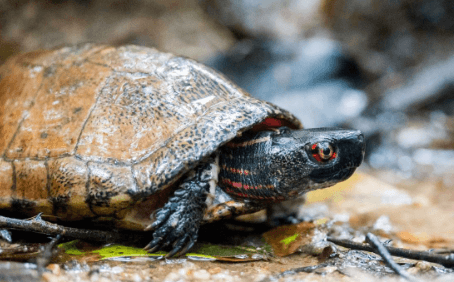Strange World Turtle Eye

The eye structure of the Strange World Turtle presents a fascinating case study in evolutionary adaptation, particularly in how its unique corneal configuration and retinal architecture enhance visual perception within aquatic environments. This remarkable adaptation not only supports foraging and predator evasion but also raises questions about the broader implications of visual acuity in survival strategies. As we explore the intricacies of these adaptations, we must consider the evolutionary pressures that have shaped such characteristics and what they reveal about the ecological dynamics of their habitats. What other secrets might this species hold?
Read also: Snow:Z7zek5ou_Aa= Fox
Unique Eye Structure
The unique eye structure of the Strange World Turtle is characterized by its remarkable adaptations, including a specialized cornea and an intricate arrangement of retinal cells, which enhance its visual acuity in diverse aquatic environments.
This design allows for significant color variations, enabling the turtle to discern subtle differences in its surroundings.
Consequently, these enhanced vision capabilities facilitate effective navigation and foraging in complex habitats.
Adaptations for Survival
Enhanced visual capabilities are just one aspect of the Strange World Turtle’s remarkable adaptations for survival, which also include specialized respiratory systems and unique behavioral strategies that enable it to thrive in its diverse aquatic habitats.
Notably, its effective camouflage techniques facilitate predator avoidance, allowing the turtle to blend seamlessly with its surroundings, thereby enhancing its chances of evasion and survival in a challenging environment.

Implications for Evolution
Evolutionary implications of the Strange World Turtle’s unique adaptations highlight the intricate relationship between environmental pressures and the development of specialized traits that enhance survival and reproductive success in fluctuating aquatic ecosystems.
The evolutionary significance of these adaptations underscores how environmental influences shape biodiversity, prompting a deeper understanding of adaptive strategies in species, thus illuminating the dynamic interplay between organisms and their habitats.
Read also: Turtle That Looks Like a Leaf
Conclusion
The unique eye structure of the Strange World Turtle exemplifies the intricate relationship between anatomical adaptations and environmental demands.
Enhanced visual acuity facilitates effective navigation, superior foraging, and efficient predator avoidance.
These adaptations not only underscore the species’ survival strategies but also highlight the evolutionary pressures that shape aquatic organisms.
Through the lens of its remarkable vision, the Strange World Turtle reveals the profound interplay of adaptation, survival, and evolution within diverse aquatic ecosystems.




